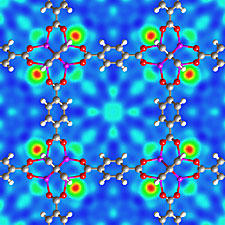Enabling the Hydrogen Economy
Problem/Challenge

In the 2003 State of the Union speech, President Bush issued a challenge to the nation's scientists and engineers to overcome technical obstacles so that "the first car driven by a child born today could be powered by hydrogen, and pollution free."
While the burning of fossil fuels produces carbon dioxide and other emissions harmful to the environment, it may be possible to make hydrogen fuel from other energy sources, including renewables. This would give consumers a fuel choice with less environmental impact and less dependence upon foreign sources.
The development of a robust "hydrogen economy," however, presents many technical challenges. Hydrogen can embrittle metals and other container materials, is highly combustible, and may require storage containers larger than those for other fuels with equivalent energy. Moreover, the technical infrastructure must be developed to ensure safe production, storage, distribution, and delivery, as well as equitable sale, of hydrogen in the marketplace.
Proposed NIST Program
Expansion of research efforts at NIST is essential to achieving widespread use of hydrogen as a fuel. NIST has been a leading provider of data on the chemical and physical properties of hydrogen for more than 50 years. It has statutory responsibility under the Pipeline Safety Act of 2002 to develop research and standards for gas pipeline integrity, safety and reliability. It is the lead U.S. agency for weights and measures for vehicle fuels, and the distribution and sale of hydrogen will require entirely new systems for ensuring equity in the marketplace.
NIST's Center for Neutron Research is a premier facility for real-time, three-dimensional imaging of hydrogen in operating fuel cells. Knowledge developed at this NIST facility and in other NIST laboratories will help reduce current technical barriers for efficient hydrogen production, storage, and use. NIST expertise in manufacturing will be essential for developing low-cost, high-volume hydrogen production methods.
Initiative outcomes will include, for example, development of physical measurement (reference) standards and calibration services for hydrogen flow rate and purity, research on appropriate fuel cell performance-based testing and rating procedures, development of fire hazard predictive models, and evaluation of fire suppression systems.
Expected Impacts
The NIST efforts described above will help realize the promise of a hydrogen economy by: ensuring accurate measures of hydrogen at points of sale; producing consensus standards that support model building codes, facilitating the adoption of hydrogen technologies in local communities; fostering private-sector innovation of more powerful, efficient, and durable fuel-cell designs; and improving industrial safety standards for materials used in hydrogen systems (e.g., pipelines) developed in collaboration with consensus standards organizations.

